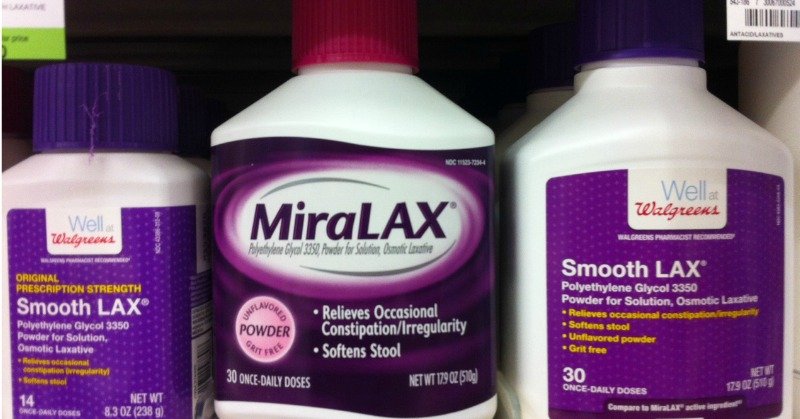 After spending years working with children in my early 20’s, I saw this laxative become more and more common in young children under the age of 5. However, the laxative pediatricians prescribe like water was not meant to be used in anyone under 17 years old, so pediatric use is technically “off label”. After learning more about this product and the risks, I’m pretty terrified that this is so commonly used in the pediatric community and recommended as the go-to laxative by doctors and nurses all over the US!
After spending years working with children in my early 20’s, I saw this laxative become more and more common in young children under the age of 5. However, the laxative pediatricians prescribe like water was not meant to be used in anyone under 17 years old, so pediatric use is technically “off label”. After learning more about this product and the risks, I’m pretty terrified that this is so commonly used in the pediatric community and recommended as the go-to laxative by doctors and nurses all over the US!
According to the product label it’s a osmotic laxative made of of Polyethylene Glycol 3350 (commonly called PEG). According to MedicineNet.com an osmotic laxative works by “holding water in the stool to soften the stool and increasing the number of bowel movements.” But is that all it does?
According to The Schmidt Firm, the law group organizing the PEG 3350 Laxative Class Action Lawsuit, “PEG 3350 is often marketed as “all-natural.” It is made of Ethylene Glycol (EG), a toxic chemical found in antifreeze. Tests on MiraLax and other PEG laxatives have found low levels of EG left over from manufacturing PEG 3350. While EG is extremely toxic, PEG 3350 is relatively safe because it is usually poorly-absorbed by the body.”
According to Gutsense.org, “Polyethylene glycol is made by stringing together molecules of ethylene glycol into a large polymer chain, hence the prefix poly-, Greek for many. On its own, ethylene glycol is used in automotive antifreeze and brake fluid. According to the National Institute for Occupational Safety and Health, it is an extremely toxic substance:
“Ethylene glycol is chemically broken down in the body into toxic compounds. It and its toxic byproducts first affect the central nervous system (CNS), then the heart, and finally the kidneys. Ingestion of sufficient amounts [as little as 30 ml — KM] can be fatal.” [2]”
“As of March 2012, the FDA Adverse Event Reporting System showed 2257 reported adverse events related (in any way) to PEG products – up from 7 in 2001. Included in the adverse events reported are serious kidney, urinary, bowel, blood, skin, and neuropsychiatric symptoms- and at least 3 children’s deaths.” [1]
Want to learn more?
Get the full story from Gutsense.org or read more about the PEG 3350 Laxative Class Action Lawsuit here.
Related reading:
- http://www.nytimes.com/2015/01/06/science/scrutiny-for-a-childhood-remedy.html
- http://www.nytimes.com/2012/05/26/us/miralax-a-popular-cure-but-never-approved-for-children.html
- https://www.schmidtlaw.com/peg-3350-laxative-class-action-lawsuit/
References:
[1] Citizen Petition to Investigate Polyethylene Glycol 3350 Product Safety for Use with Pediatric Patients
[2] Is Miralax the Next Vioxx?
[3] MedicineNet.com
